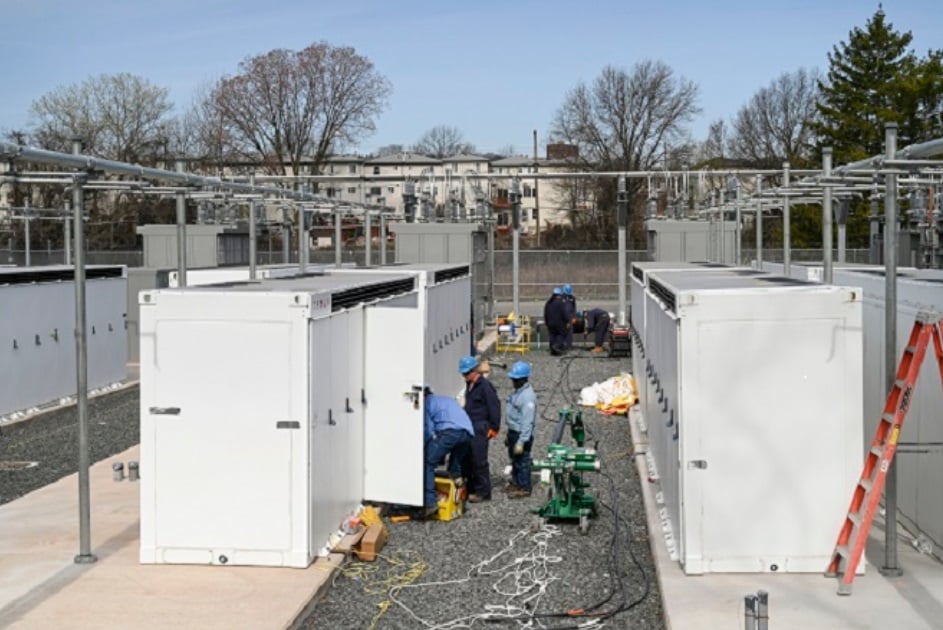This panel was overseen by Allison Weis, global head of storage at the market research and analysis firm Wood Mackenzie. It also highlighted Raja Sundararajan, executive vice president of strategy and customer solutions at Wisconsin-headquartered utility Alliant Energy, alongside Benjamin Lavoie, senior director of energy storage & EV solutions at the renewable energy, storage, and energy efficiency solutions provider Ameresco.
New York’s steam system
During the discussion, Look addressed the potential of using LDES technology to assist in decarbonising Con Edison’s steam system, enabling its steam clientele to comply with New York’s Local Law 97 (LL97). This law aims to reduce CO2 emissions of large structures in the city by 40% by 2030 and achieve net zero by 2050.
LL97 applies to buildings exceeding 25,000 square feet; non-compliance incurs a penalty of US$268 per tonne of CO2.
Complementing this requirement (as part of the New York City Climate Mobilisation Act), in 2022, Con Edison declared its intent to decarbonise its steam system in alignment with New York State’s net-zero-targeting Climate Leadership and Community Protection Act (CLCPA) and the Climate Mobilisation Act.
Con Edison operates the largest steam system in the US, serving customers that include the Empire State Building, Grand Central Station, and other iconic city landmarks.
In a 2022 emissions report, the utility notes that more than 90% of its non-greenhouse gas air emissions stem from operating its steam system.
Look states that Con Edison is currently exploring electric boilers as one alternative for decarbonising the steam system.
However, this could place a significant burden on the grid, necessitating costly system enhancements. To mitigate these challenges, the firm is contemplating thermal energy storage.
“One option we’re investigating is thermal energy storage. It allows us to regulate when we charge and discharge energy, alleviating the electric load while generating both steam and electricity—beneficial for cogeneration,” Look explains.
He adds, “Another factor is resilience. As we depend more on renewables, there will be periods, especially during winter, where solar and wind resources aren’t available. That’s where long-duration storage of up to 72 hours or more becomes essential.”
The thermal energy storage system in this scenario would utilize resistors to produce heat and maintain it in hot blocks, achieving temperatures of up to 1500°F (816°C) or higher.
When the system discharges, water is forced through a heat exchanger, creating superheated steam that drives a steam turbine to generate electricity and street-pressure steam.
In May of 2024, a concrete thermal energy storage pilot project was evaluated at a gas facility in Alabama, US.
This system features an energy storage capacity of 10MWh (electricity) and employs heat from a gas plant unit to heat concrete blocks, which store energy thermally. The stored thermal energy is subsequently transformed back into steam to generate electricity in the power plant.
Saudi Arabian oil company Aramco has also initiated engineering studies for an ‘industrial scale’ implementation of a comparable technology from Rondo Energy termed a ‘Heat Battery.’
LDES research
Look underscores the significance of collaborative research via the Electric Power Research Institute (EPRI) energy storage programmes.
EPRI is a non-profit organization conducting independent research on the electricity system and is primarily funded by utility company memberships.
Look elaborates on EPRI:
“One initiative they have is a comprehensive database of nearly all energy storage solution providers. Recently, they are forming a consortium, of which we are a part.”
“This consortium facilitates the sharing of demonstration data. Utilities and energy storage providers conduct demonstrations and provide performance data on how the solution truly operates in practice. Being part of the consortium allows us to learn from and observe these demonstrations.”
Establishing a demonstration project can be a significant commitment, and access to research on a variety of LDES technologies can assist utilities like Con Edison in making optimal decisions without incurring the costs required for each specific technology demonstration.
Several LDES technologies remain in a pre-commercial phase, complicating the ability to determine their performance in real-world scenarios.
Raja Sundararajan encapsulated this challenge during the LDES panel discussion, stating:
“Until the market sends the appropriate pricing signals, reliance on modeling is necessary, hoping that regulators or customers will make a leap of faith.”
Innovative electrochemical energy storage technologies aspiring to replace or act as alternatives to lithium-ion batteries may face hurdles in commercialisation and scaling up, Anh Vu, senior energy storage engineer at market intelligence firm Clean Energy Associates (CEA) noted in a Guest Blog published today by Energy-Storage.news.
Vu pointed out that lithium iron phosphate (LFP) batteries employed in stationary storage applications currently outperform competing technologies such as sodium-ion or flow batteries in aspects like energy density and power density.
Advancements continue to be made in the lithium-ion sector, which benefits from economies of scale. However, emerging non-lithium technologies may find their niche, with Vu highlighting long-duration storage as an example. For industrial heat, thermal energy storage could fulfil a role that electrochemical batteries might not be equipped to perform.

